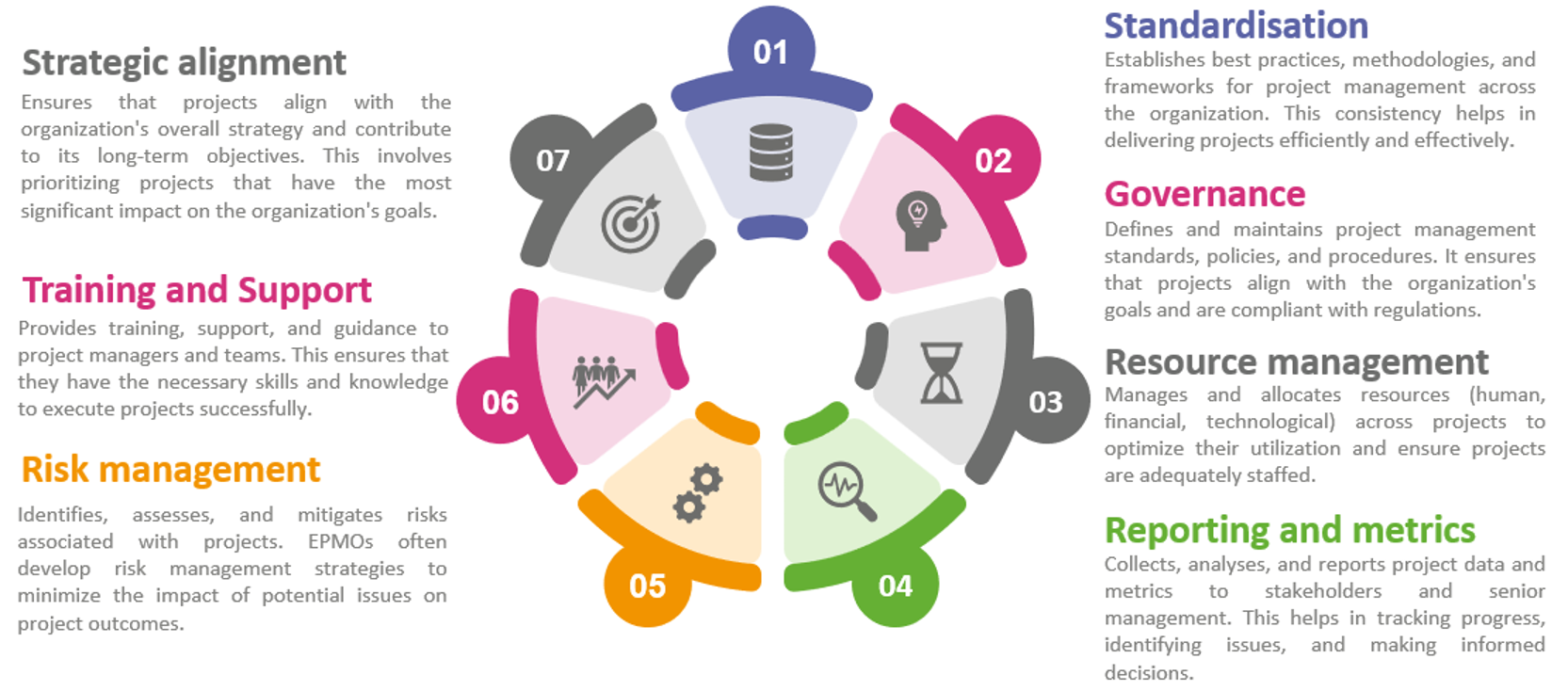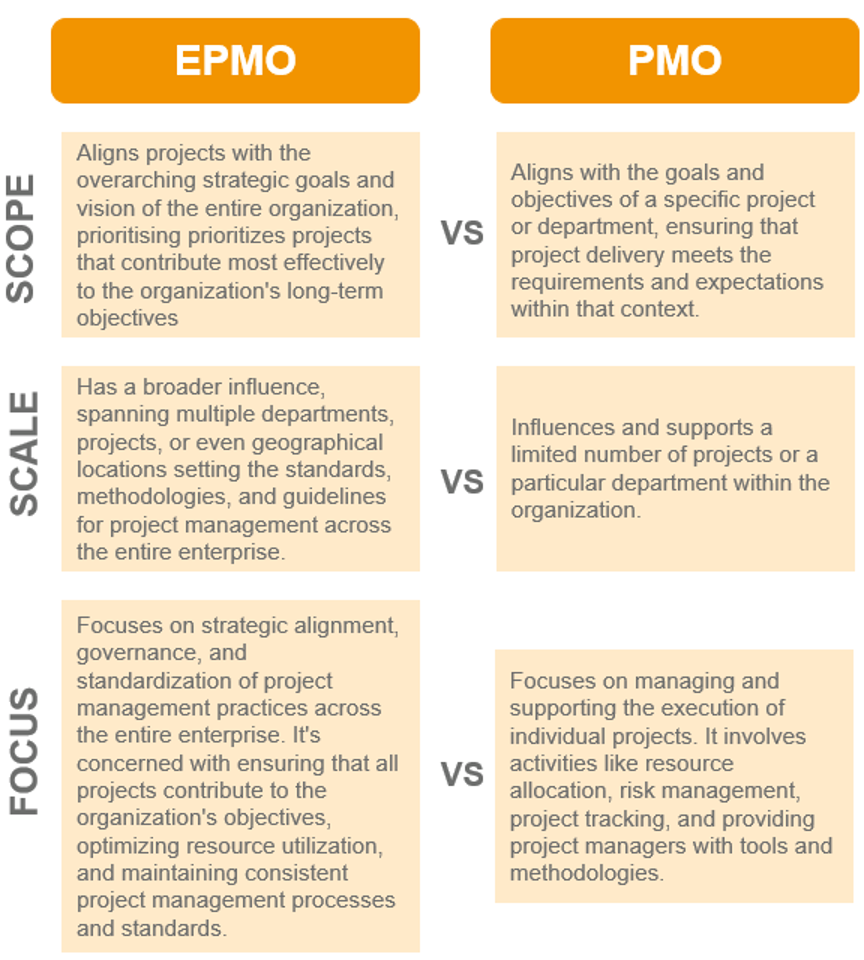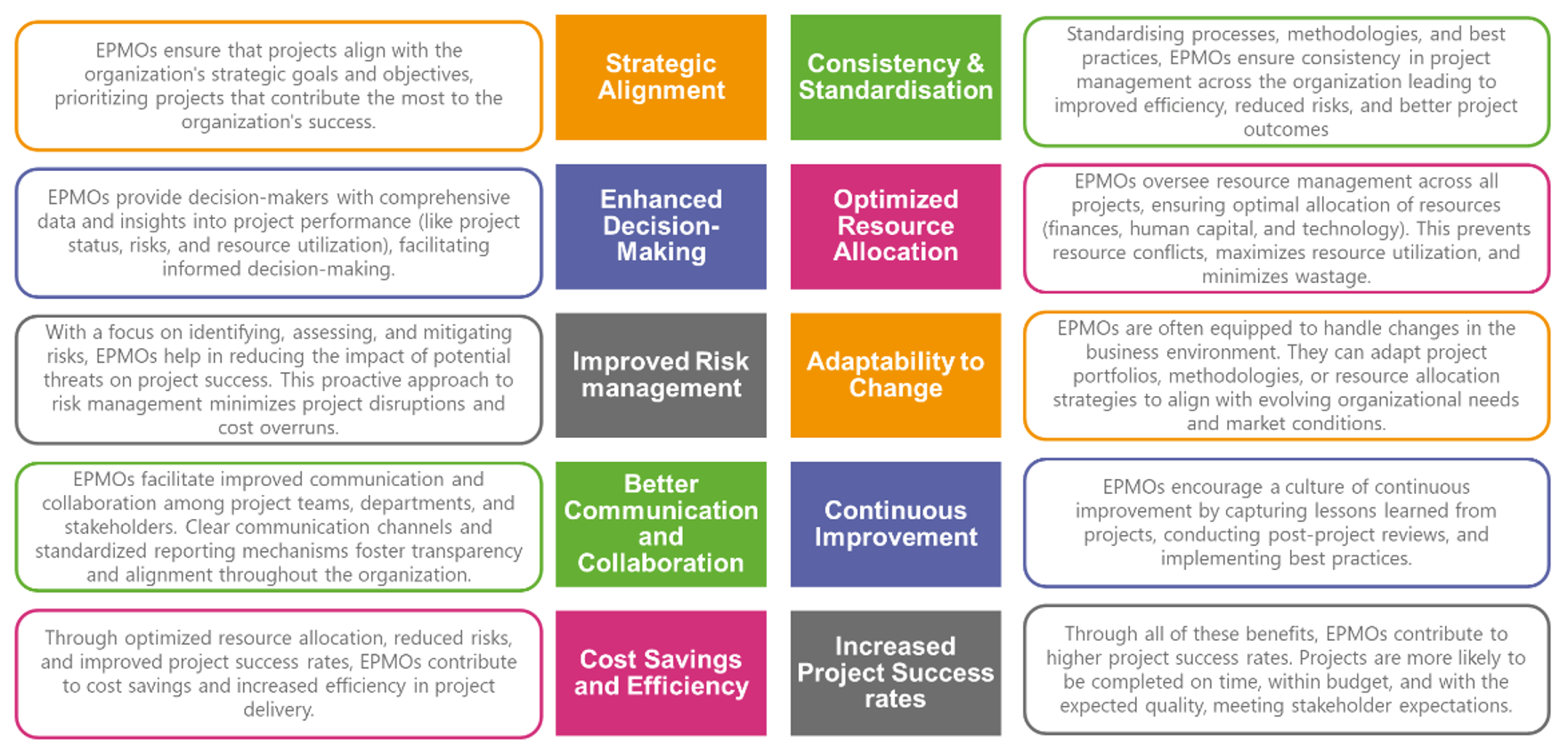An Enterprise Project Management Office (EPMO) is a centralised group or department within an organisation that sets priorities, standards and goals for the organisation’s portfolio of projects. An EPMO oversees the planning, execution, and governance of projects. Its primary goal is to standardise project management processes, tools, and methodologies to ensure alignment with the organisation’s objectives and strategies.
What does an EPMO do?
 Overall, an EPMO plays a crucial role in enhancing project management maturity within an organisation, fostering collaboration, improving project success rates, and maximising the value delivered through projects.
Overall, an EPMO plays a crucial role in enhancing project management maturity within an organisation, fostering collaboration, improving project success rates, and maximising the value delivered through projects.
What is the difference between an EPMO and a Project Management Office (PMO)?
Essentially an EPMO is a PMO at an enterprise level, so their difference lies in their scope, scale and focus.

What are the benefits of an EPMO
An EPMO offers several benefits to organisations:

Overall, an EPMO plays a pivotal role in ensuring that projects are strategically aligned, well-executed and contribute effectively to the organisation’s success.
You must be thinking; ‘wow! an EPMO sounds great, there are so many benefits… but how can my organisation actually start to create an EPMO?’
Creating and implementing an EPMO involves several key steps:
Define Objectives and Scope
- What are the objectives of the EPMO?
- What is the scope of the EPMO’s responsibilities? Specific departments/projects or the entire enterprise?
Gain Executive Support
- Securing support from top-level stakeholders and ensure their commitment and resources.
Establish Governance Framework
- Develop a governance structure outlining roles, responsibilities, and decision-making processes.
- Define procedures, standards, and policies for the enterprises’ project management practices.
Build the EPMO Team
- Assemble a team with a mix of skills (change management, project management, strategic planning) and assign them roles and responsibilities.
Select Methodologies and Tools
- Choose a project management methodology and tools which suits your enterprises’ projects.
- Implement project management software which tracks and reports on the status and risks of the project.
Develop standardised processes
- Establish and implement standardized project management processes, for planning, delivery, monitoring and closing.
- Document and communicate these to relevant stakeholders.
Strategic Alignment
- Develop a process for prioritising projects based on strategic importance.
Resource Management
- Implement a resource management process to optimise the allocation of human, financial and technological resources.
Risk Management
- Implement a risk management framework to identify, assess, mitigate, and monitor risks across all projects throughout their lifecycle.
Performance Measurement and Reporting
- Establish key performance indicators (KPIs) to measure project and portfolio performance.
- Set regular reporting mechanisms to keep stakeholders informed about project status and progress.
Need more convincing?
PMOs are growing; in size, budget and importance. In 2016, the average PMO accounted for nearly 5% of the project budget and had a staff size of 9. 49% of project managers report to the PMO (up from 42% in 2012). Incidentally, high-performance organisations had a far higher percentage of project managers reporting to the PMO than low-performing organisations – 68% vs 53%. (PMSolutions)
Over the past 10 years, the relevance of Project Management Offices in the organisation has grown tremendously because PMOs have increased the project success rates and made project delivery more standardised and predictable.’ With this being said, PMOs are growing in both sizes and importance, increasing the need for EPMOs to operate at a higher level and to enhance resources at PMO level and to ensure strategic alignment. ‘Moving from what has been the traditional approach of having program and project level PMOs to a PMO at enterprise level is a logical step in increasing the PMO maturity level.’
PMOs delivered a 33% improvement in projects delivered under budget, 27% improvement in customer satisfaction, 25% increase in productivity, and 25% reduction in failed projects. Altogether, PMOs led to $175k cost savings per project. (PMSolutions)
If this all sounds like something you’d like to hear more about, why not get in touch with us today and discuss the benefits and set up of your EPMO or PMO needs.





